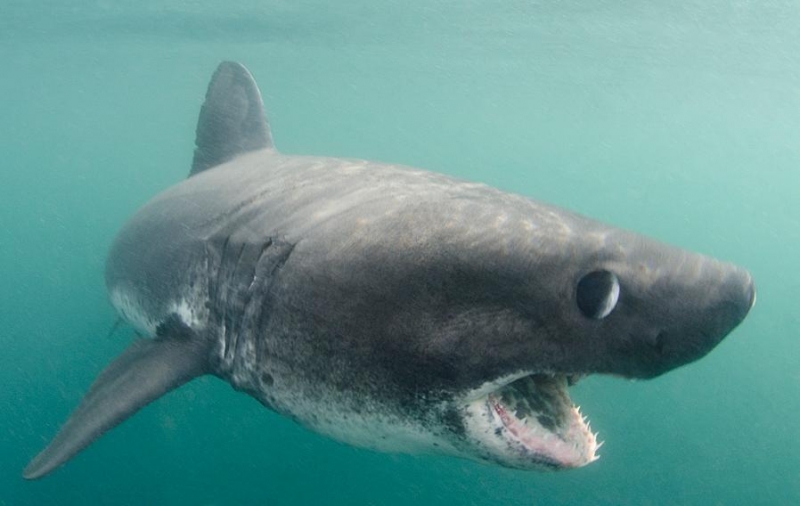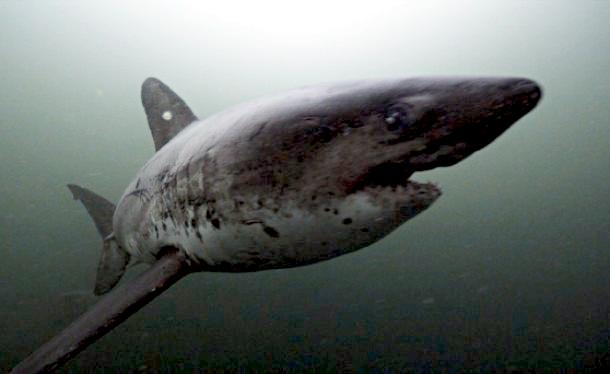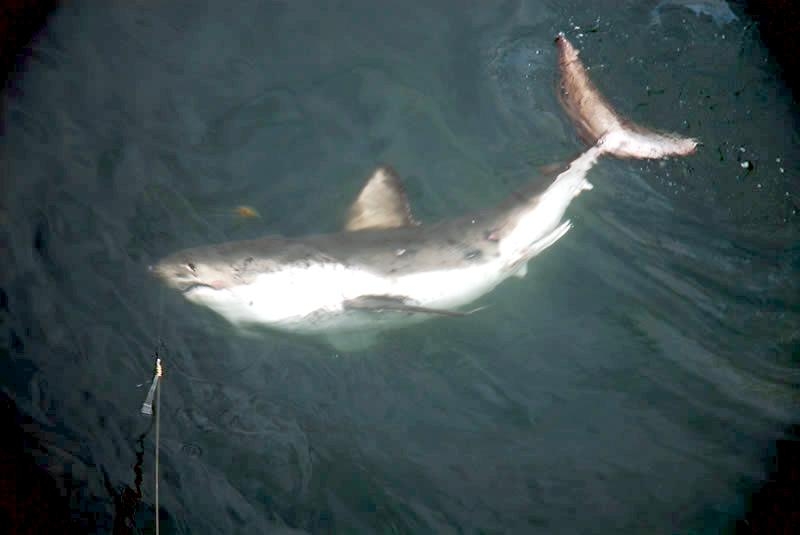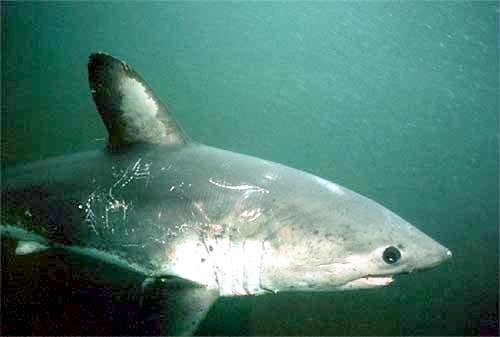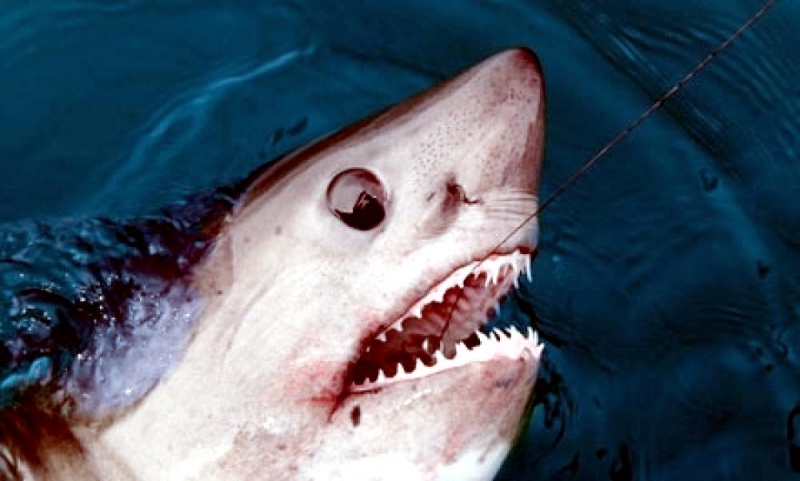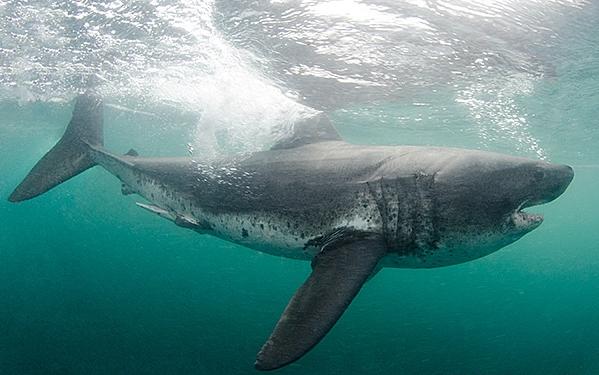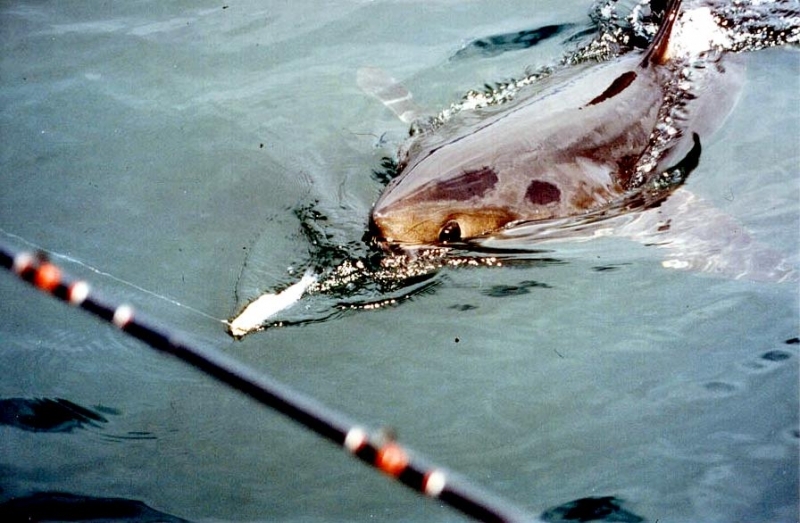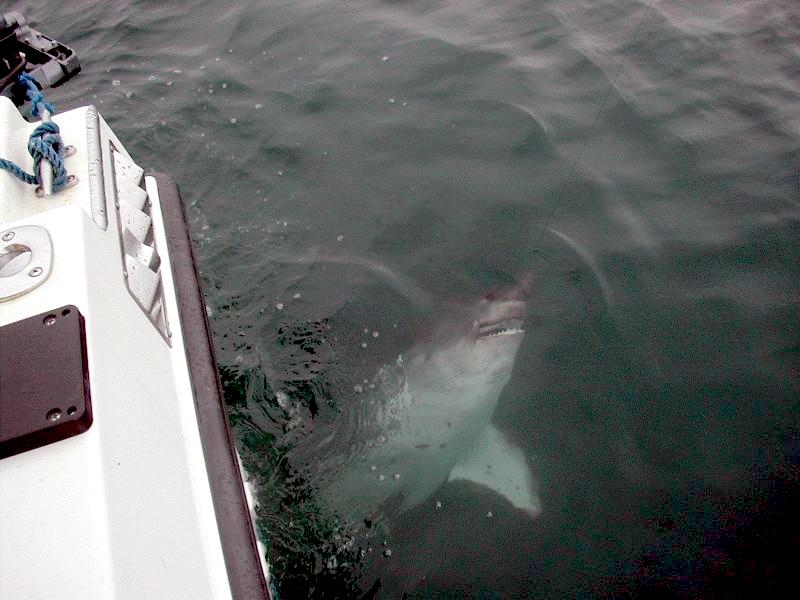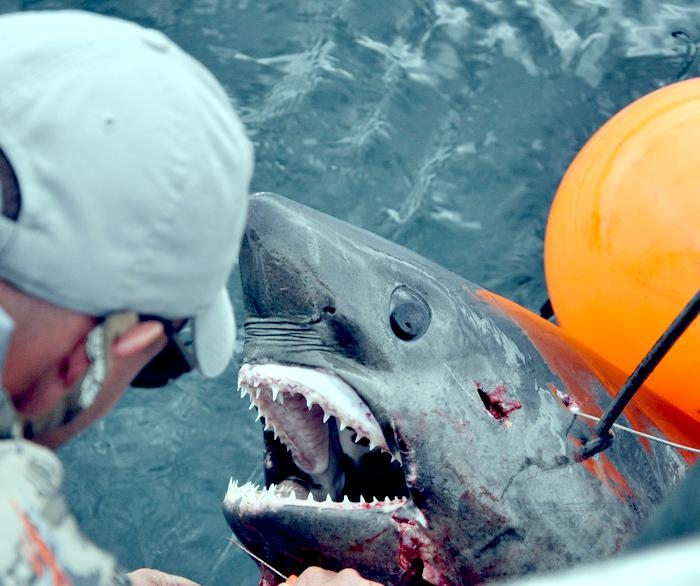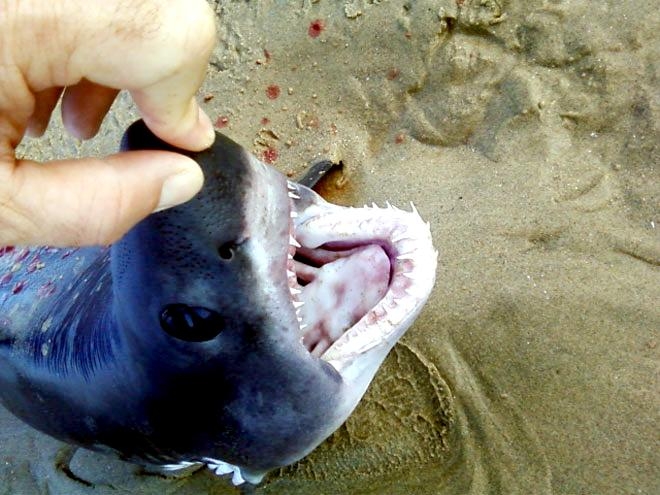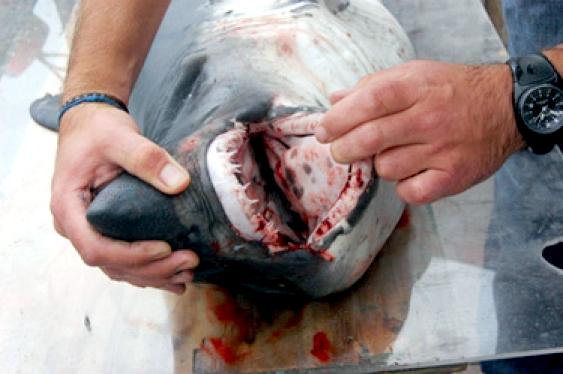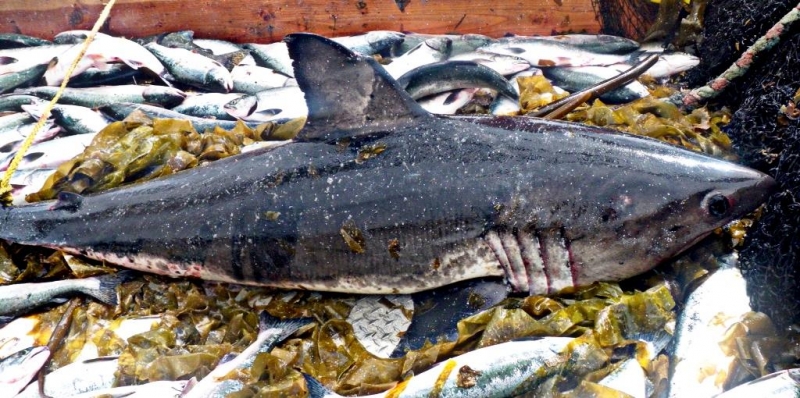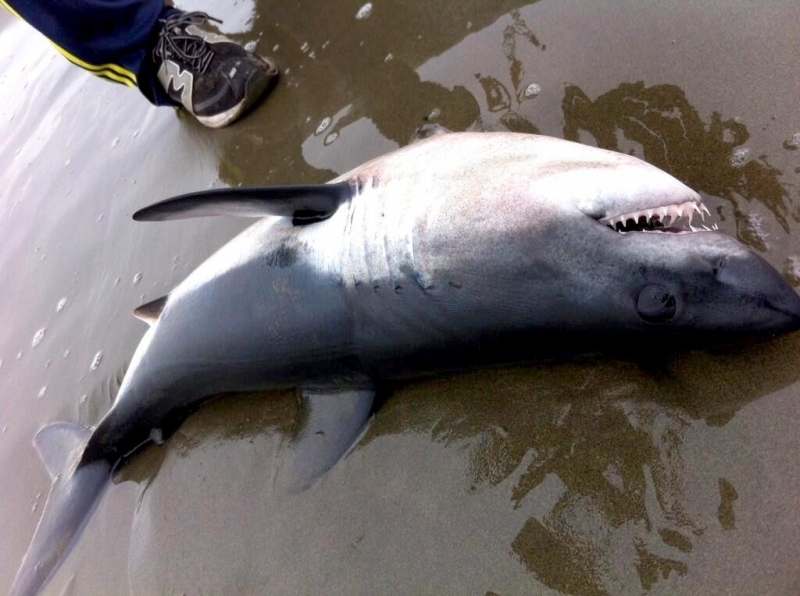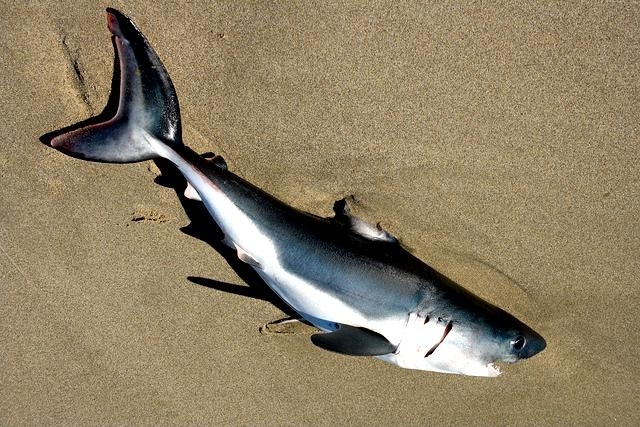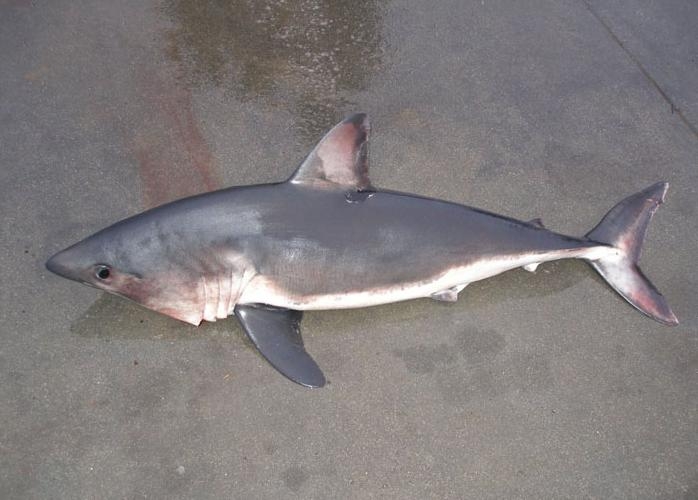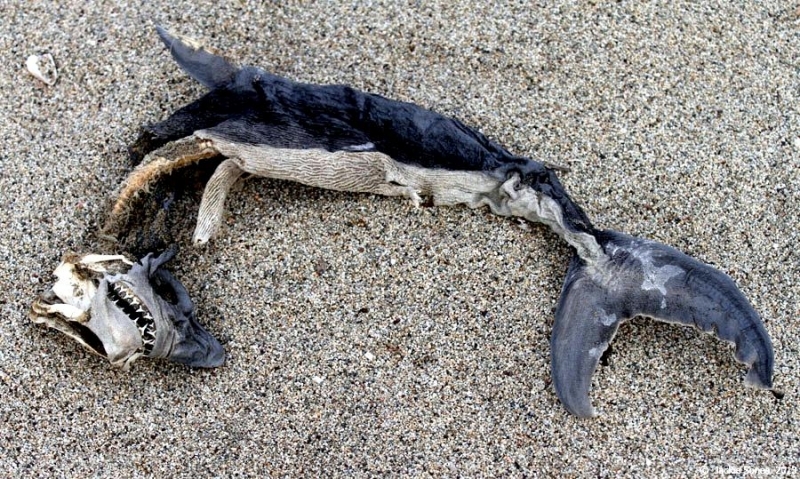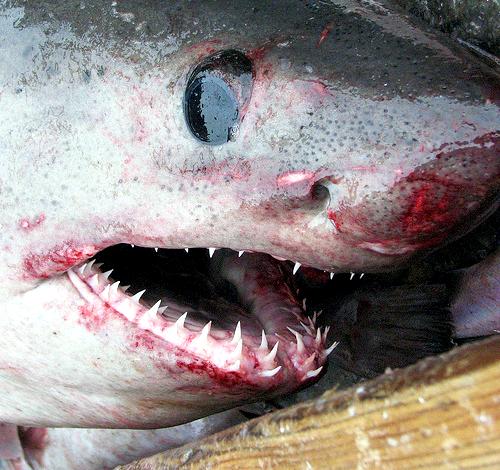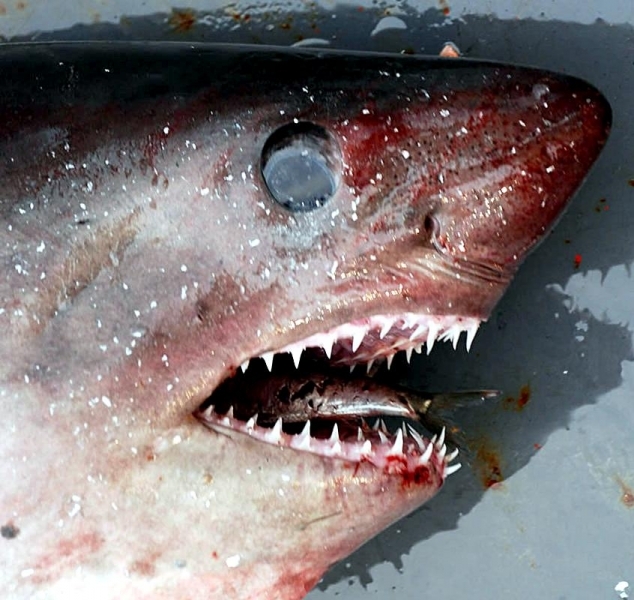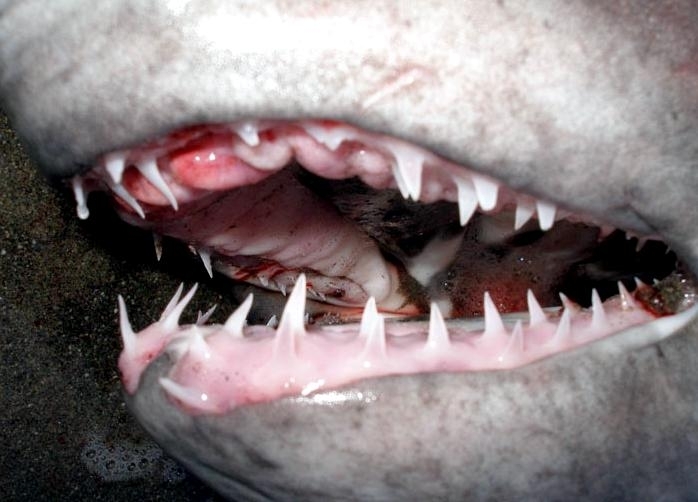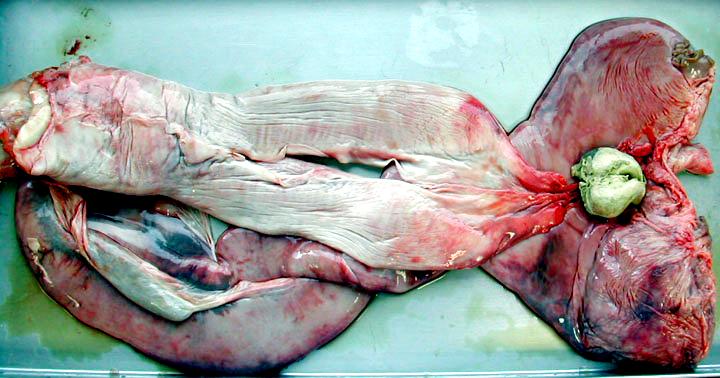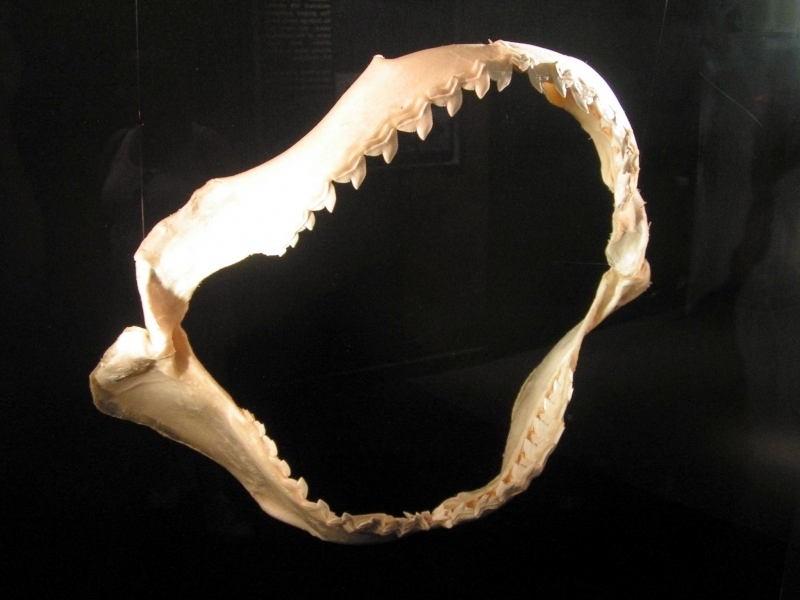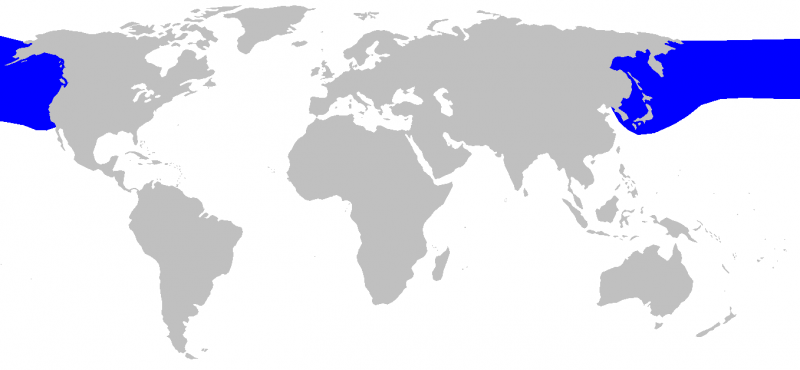“Lamna ditropis”
Salmon Sharks are closely related to Porbeagle Sharks. Salmon Sharks measure up to 3.7 meters in length and weigh a maximum of 454 kilograms. They have heavy spindle-shaped bodies with short, blunt, conical snouts and large gill slits relative to their body size. Their first dorsal fin is dark in color. Their dorsal (upper) sides and flanks are dark blue to gray or black in color. Their ventral (under) sides are white with darker blotches or spots. Salmon Sharks have been observed both singly and in schools, usually feeding. This species is a very fast swimmer. In the eastern North Pacific, female Salmon Sharks live up to 20 years, males to at least 27 years. In the western North Pacific, males mature at about 1.77-1.86 meters in total length and 5 years of age and females mature at about 2.00-2.23 meters when they are 8-10 years old. Salmon Sharks in the eastern North Pacific appear to have a faster growth rate than those in the western North Pacific; males mature at 1.58 meters at 3-5 years old, females at 2.05 meters when they are 6-9 years old. Females in the eastern North Pacific are larger than those in the western North Pacific.
Salmon Sharks are able to maintain a body temperature above the temperature of the surrounding water. Most other marine life is ectothermic, which means they maintain an internal temperature that matches the surrounding water. Fast swimmers like sharks and tuna are more commonly endothermic. Lamnids have vascular counter-current heat exchangers that enable them to retain the heat produced by their metabolism. Salmon Sharks have retes near their eyes, in their muscles used for locomotion and in their viscera (body cavity organs). They also regulate their temperature with vascular shunts that enable them to alter the route of blood flow. Salmon Sharks are unique in that they can raise their internal body temperatures up to 15.6 °C above surrounding water. The ability to control body temperature allows Lamnids and other endothermic species, to increase their vertical range in the water column and move through varying water temperatures in search of prey. Salmon Sharks are found in the North Pacific near Japan, Korea and the Sea of Okhotsk to the Bering Sea and southward to southern California and Baja California, Mexico.
Salmon Sharks inhabit cool temperate waters (2.5°-24 °C) down to at least 152 meters. The migratory range of Salmon Sharks is wide and are likely associated with the migratory patterns of their prey fishes. The females give birth to litters of 2-5 pups are born after a gestation period of about 9 months. Newborns measure about 84-96 centimeters in length. Salmon Sharks mate during summer and autumn and give birth in the spring. Like other shark species, the male Salmon Shark grasps the female by biting her while he inserts a clasper into her cloaca. The eggs are retained within the body of the female in a brood chamber where the embryo develops, receiving nourishment from a yolk sac. This is the method of reproduction for the “live-bearing” fishes where pups hatch from egg capsules inside the mother’s uterus and are born soon afterward. Salmon Sharks are potentially dangerous to humans due to their size, but have not been associated with injuries to humans.
